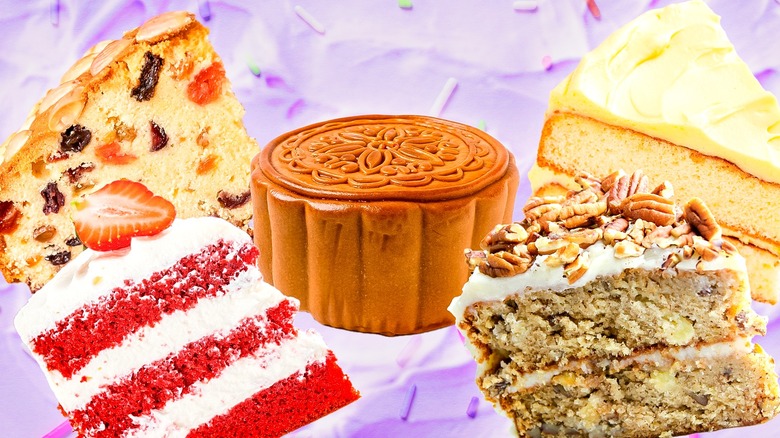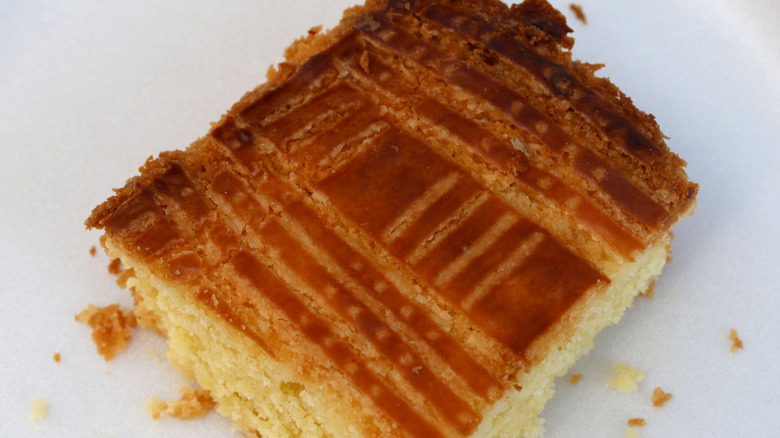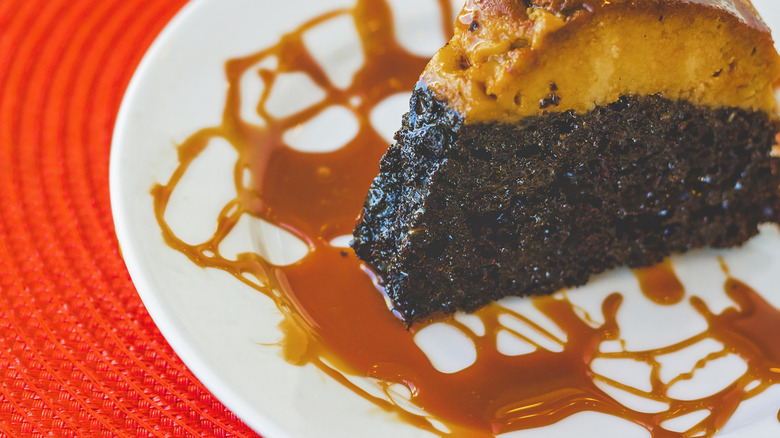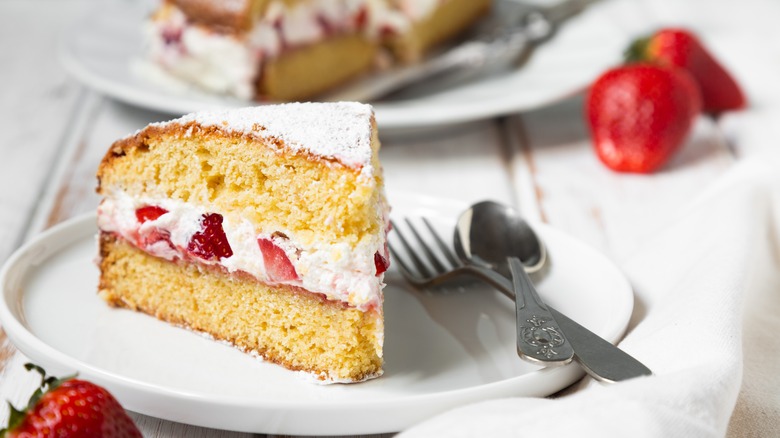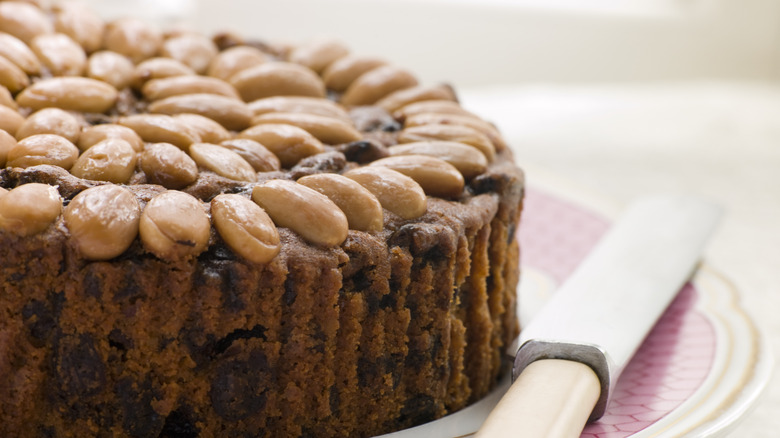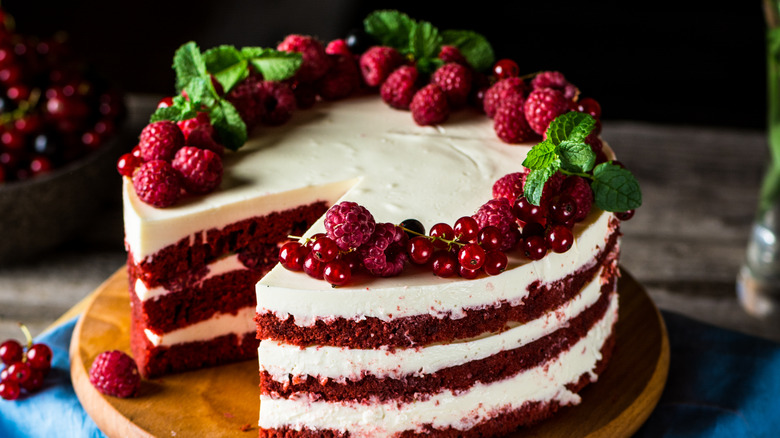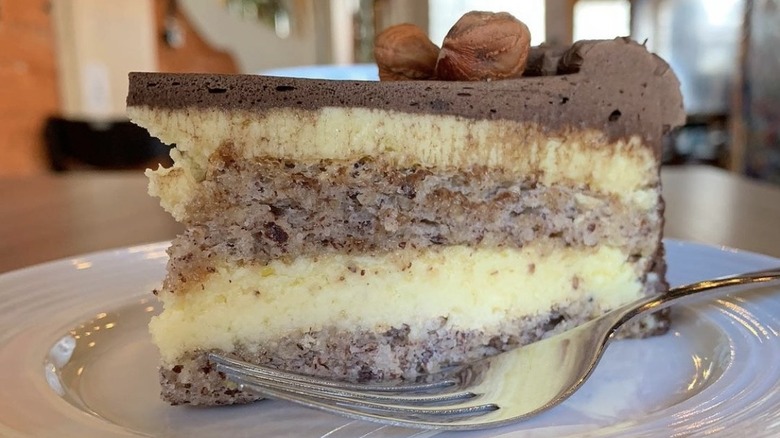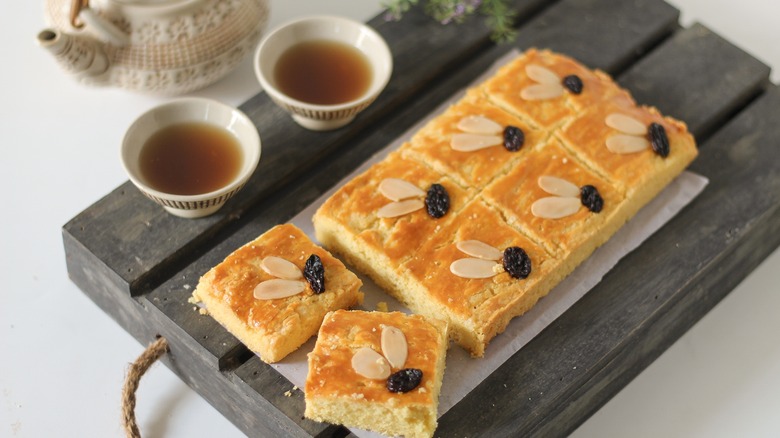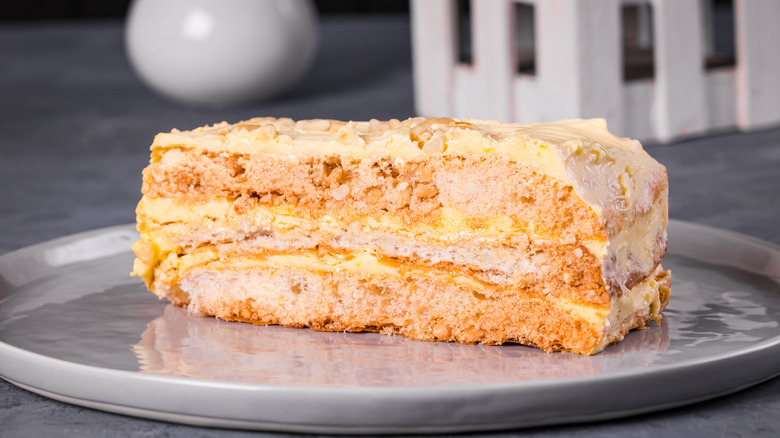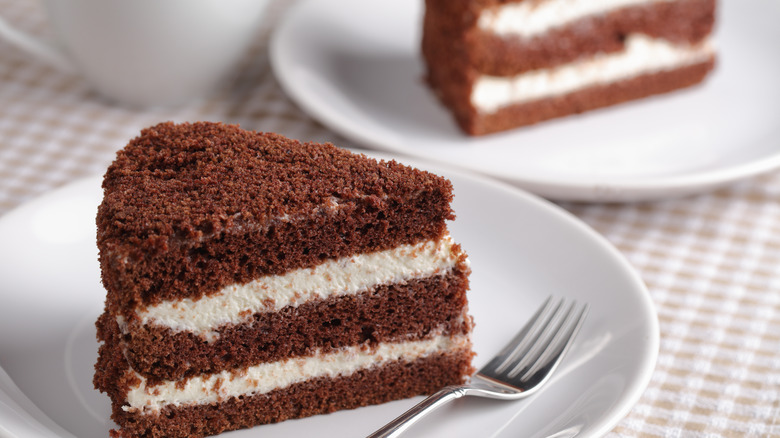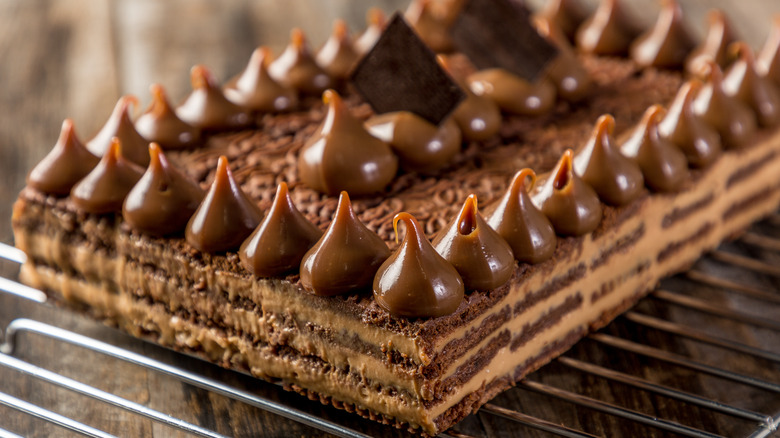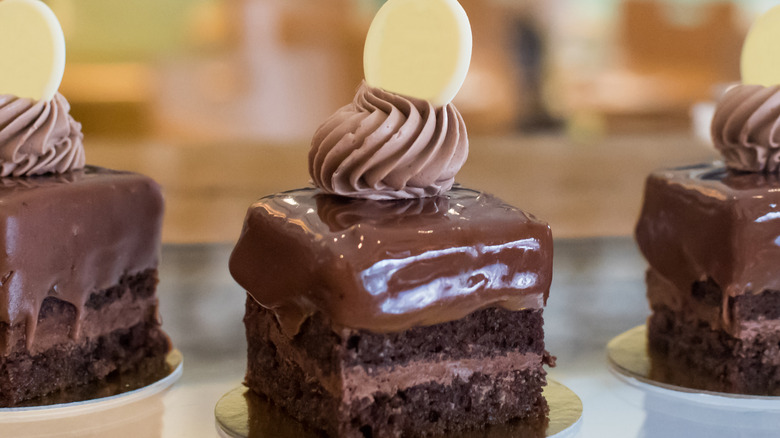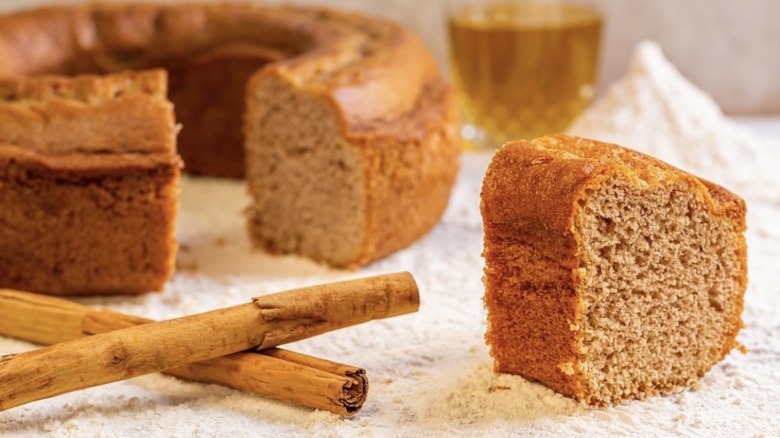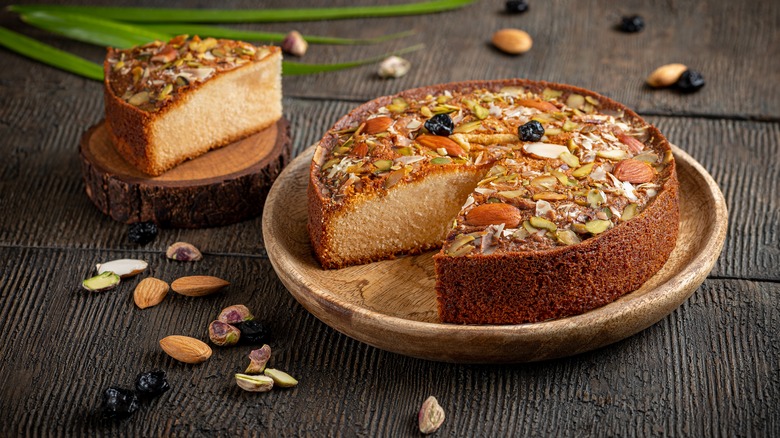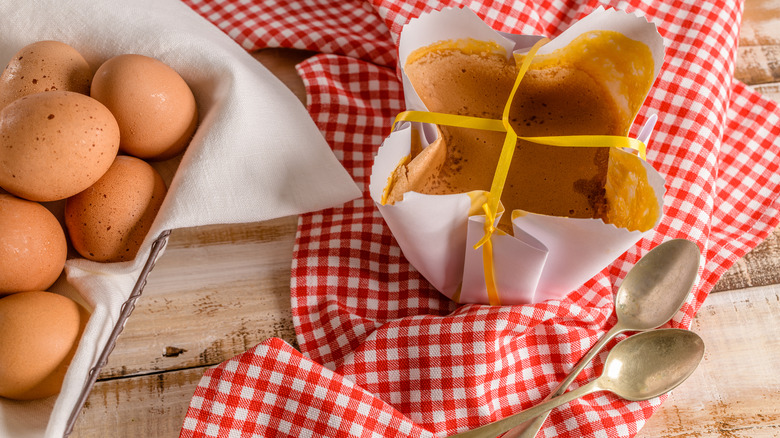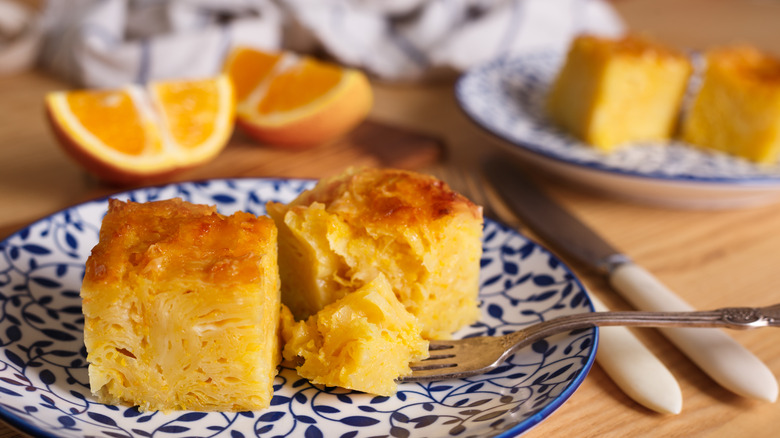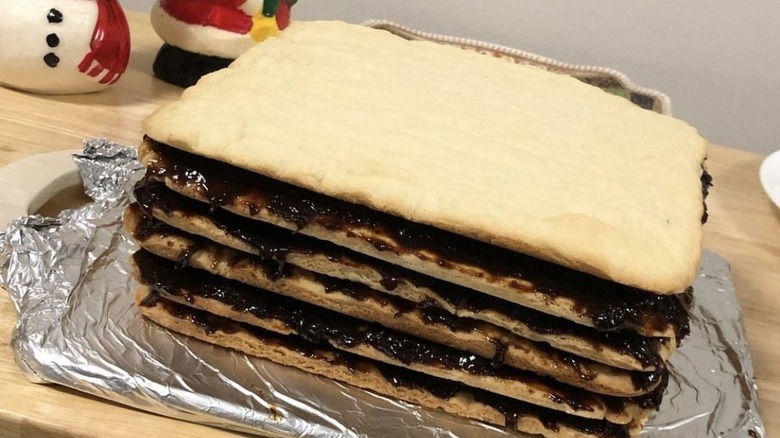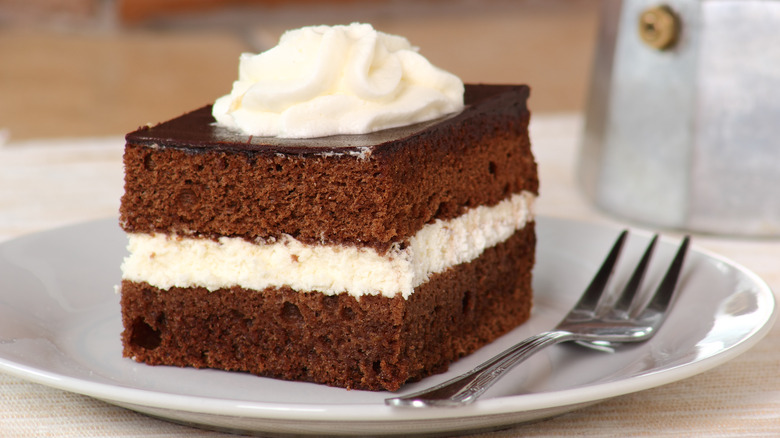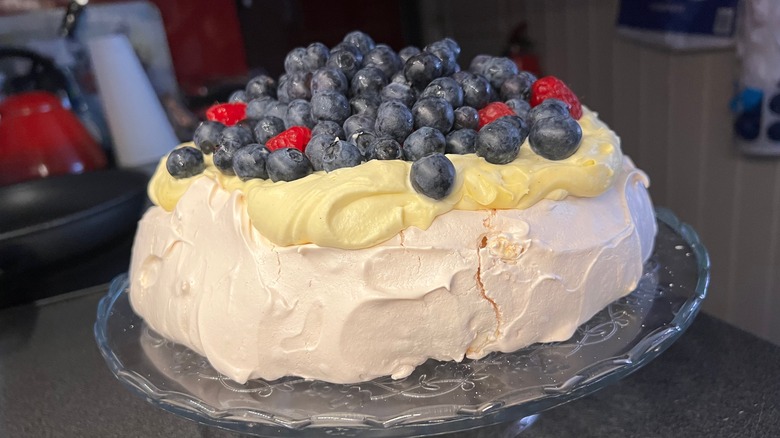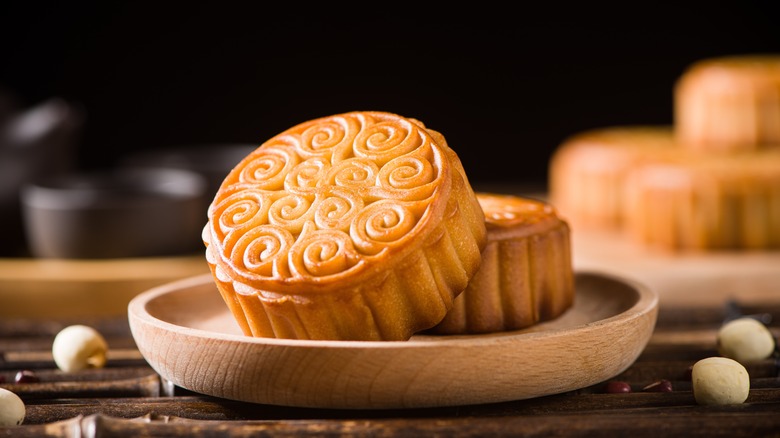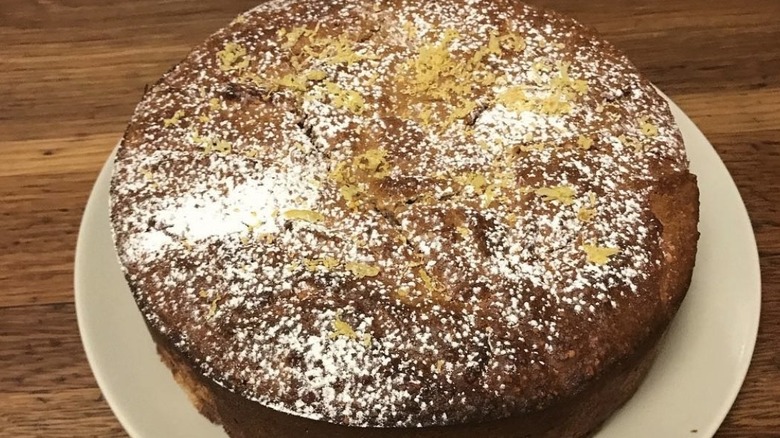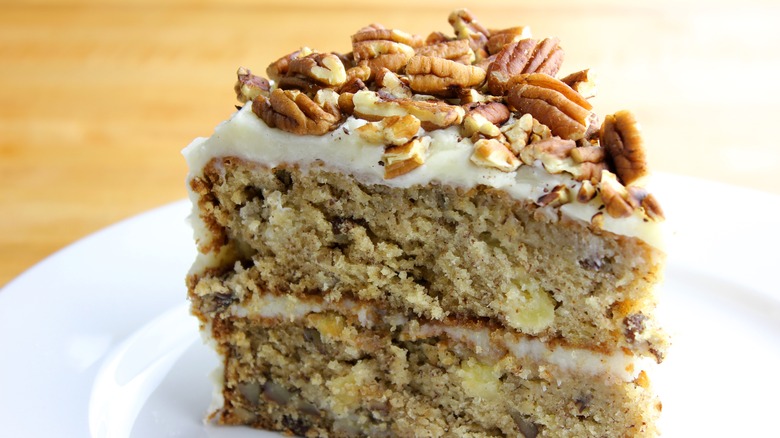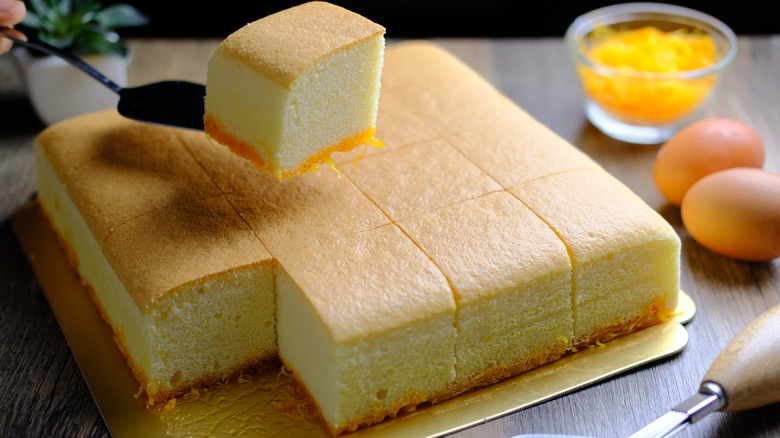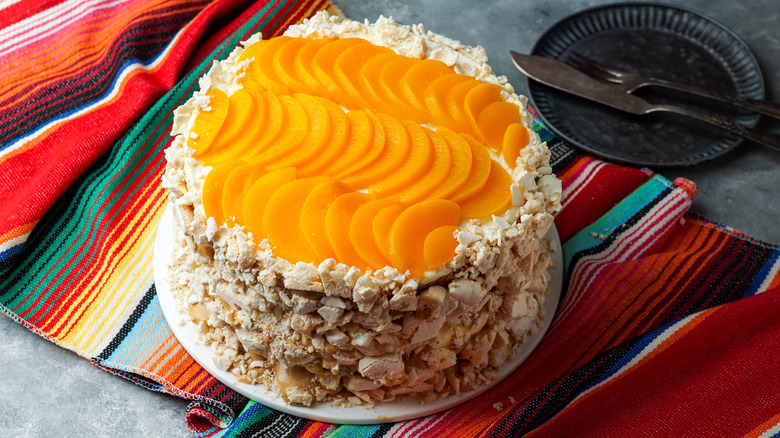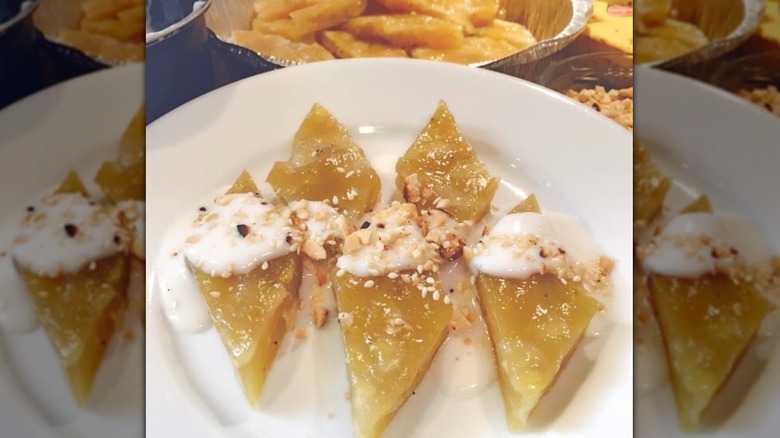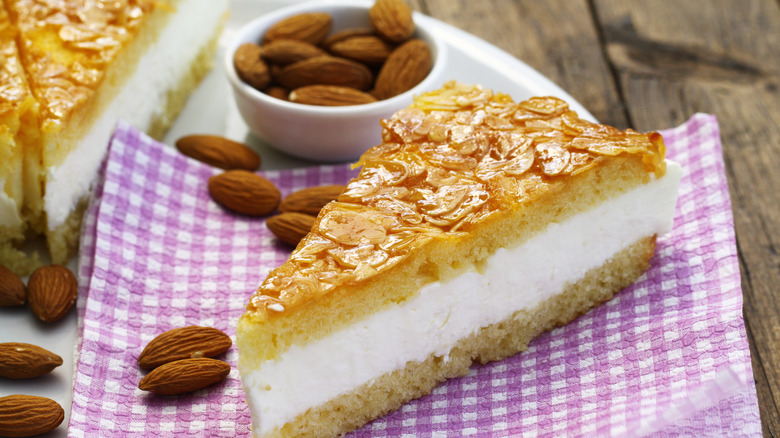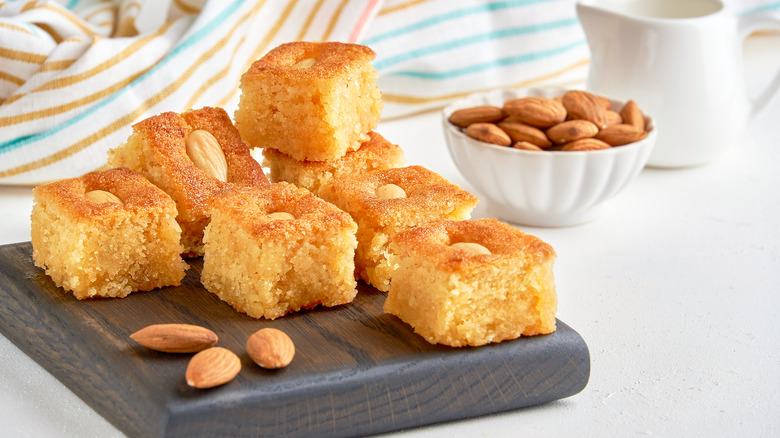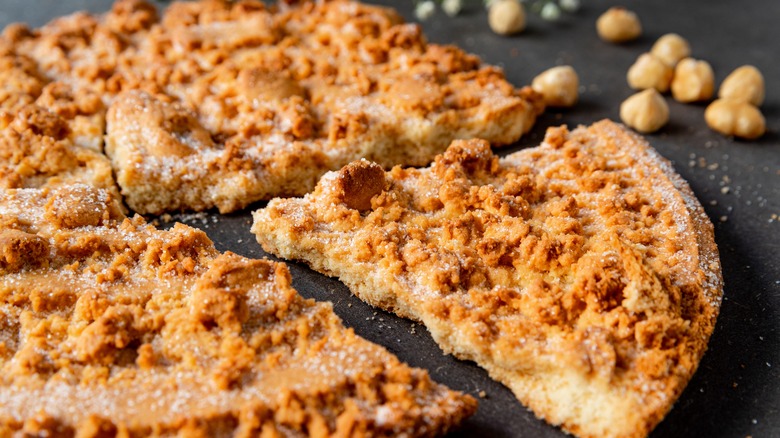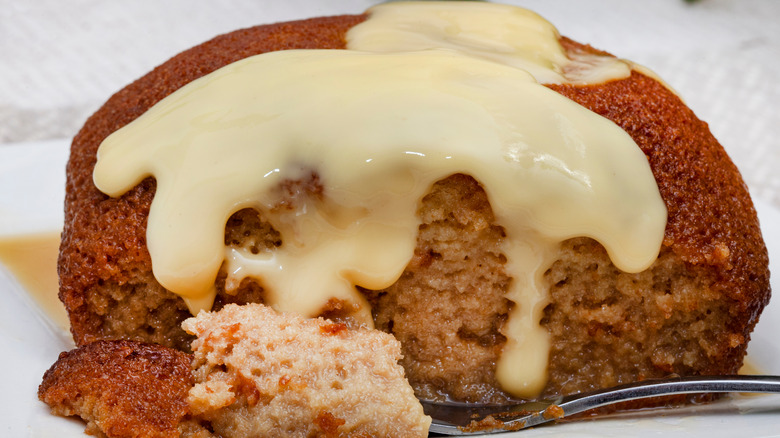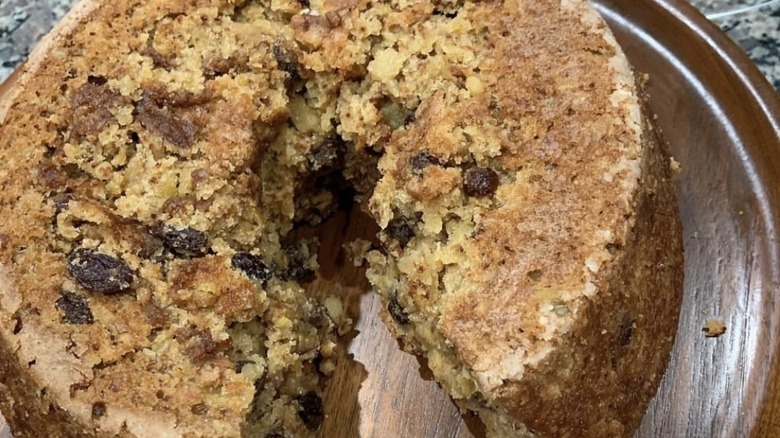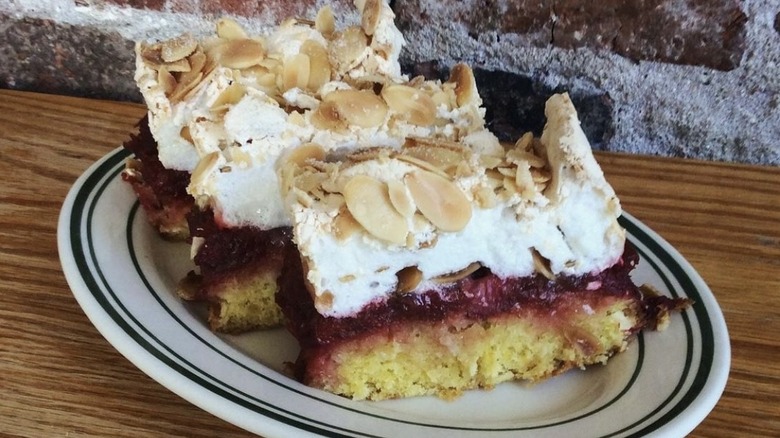30 Popular Types Of Cake From Around The World
Like how all countries have their own cuisines, they also have their own cake styles. The ingredients used in these desserts and their construction are wholly influenced by a region's culture, climate, and history. It's what makes a recipe in France different from one in Egypt or a sponge from Asia different than one in South America. Moreover, the immense variety in cake styles also translates to different occasions where the cakes are served, like afternoon tea versus an opulent dinner party.
In the United States, we are relatively shuttered to the diversity of cakes around the world. Indeed, there's nothing wrong with a dense devil's food cake or a slice of coffee cake for breakfast, but there are so many flavors and textures possible when you look outside of the country's borders. Here are some of our favorite cakes from around the world, many of which you can try making at home.
Breton butter cake (France)
Breton butter is a classic French dessert perfect for people who can't decide if they want cake or cookies for dessert. The dessert is inextricably linked to the Brittany region, where it is also called gâteau Breton or kouign-amann. It's made with high-quality European butter (often sourced from Breton), sugar, vanilla, yeast, and egg. Some variations will also include a jam filling. Breton butter cake is often served as an accompaniment for afternoon tea or as an after-dinner dessert.
Impossible cake (Mexico)
Mexico's Impossible cake is a dessert everyone should try at least once, especially if you love to eat flan. This dessert, which also goes by the name chocoflan, is made with a chocolate sponge cake base topped with a delicate layer of flan. The exact history of this hybrid treat is contested, but it's likely a stack between trendy French crème caramel and Mexican chocolate cake that emerged during the early-to-mid 19th century in the country.
Victoria sponge cake (Britain)
Victoria sponge cake is one of the most easily recognizable desserts in British cooking. It was named after Queen Victoria of England and has claimed its reign over the country's sweet tooth ever since. Decadent layers of vanilla sponge sandwich a layer of sweet strawberry jelly before being topped with powdered sugar and served. Some recipes will also include a whipped cream layer with the jam, as well as on top of the cake, and a garnish of fresh strawberries.
Scottish Dundee cake (Scotland)
It's easy to identify Scottish Dundee cake by its unique concentric almond pattern, but did you know this dessert was one of Queen Elizabeth's favorite tea-time accompaniments? The authentic version of this recipe is studded with raisins, sultanas, orange zest, almonds, and Seville marmalade, but other variations also incorporate rum, gingerbread, nuts, and cherries. The key to a true Scottish Dundee cake is the sweet-bitter Seville oranges, which are complemented and balanced with the other add-ins. It's clear this dessert isn't just any old fruitcake.
Red velvet cake (United States)
America lays claim to many different kinds of cake, but few are as well-known as the classic (and decadent) red velvet cake. This bright red cake was originally colored with beet juice but has since been replaced by the proliferation of food coloring. It also has a mildly tangy taste due to the addition of buttermilk and a sweet cream cheese frosting.
The red velvet cake as we know it first came into the public eye when it was served at the Waldorf-Astoria Hotel in New York City in the 1930s. However, Southerners have staked claim over its creation, too, since buttermilk was an ingredient they added to many other recipes.
Kyivski tort (Urkraine)
The Kyivski tort was originally named after the capital city of Ukraine, where it's often eaten as a special-occasion dish. It surged in popularity in the 1950s and had many travelers taking pieces (or whole cakes) home with them after visiting the country. The basic formula for Kyivski features layers of light, soft sponge, meringue interspersed with hazelnuts, jam (strawberry, peach, or apricot are all common), and rich, chocolatey condensed milk cream. It's a dense dessert that will leave you feeling satisfied with every bite.
Boterkoek (Netherlands)
The Dutch sure do love their almond desserts, and boterkoek is no different. It's made with a buttery sponge with thinly sliced almonds and almond extract, which gives this soft cake its unique nutty undertone. The translation of the recipe is "butter cake" in Dutch, and it makes sense, considering the cake contains almost as much butter as it does flour and sugar. The sweetness of the recipe gives the cake a soft bite to it, along with a slightly crisp sugar crust.
Sans rival (Philippines)
Sans rival is a Filipino dessert with elements of French culinary technique. It was believed that Filipino chefs first got the idea for the cake when they traveled to France for technical training in the 1920s and 1930s. The sans rival shares some similarities with French dacquoise, which is made with hazelnuts, meringue, and buttercream.
The cake is made with layers of cashew meringue, French buttercream, and chopped cashew pieces. The meringue for this recipe must be baked, which gives it a crunchy, pavlova-like texture. And unlike other types of buttercream, the French version contains egg yolks. This additional ingredient makes sans rival especially unctuous.
Smetannik (Russia)
Smetannik is a Russian sour cream cake that is super moist and soft. The dessert can be made with a chocolate or a vanilla sponge base (or sometimes both), but the middle layer of cream is made with sour cream and fine sugar, which gives it a yogurt-like consistency that contrasts the denseness of the cake. Many of these cake recipes also include layers of crushed walnuts or chocolate ganache, but the only real requirement for this to be a true smetannik is that it has sour cream frosting.
Chocotorta (Argentina)
Chocotorta is just as pretty to look at as it is to eat. This Argentinian dessert is often consumed as a birthday cake and is named after the Chocolina cookies it is made with. It's also a portmanteau for the two Spanish words for "chocolate" and "cake." One of the reasons why the chocotorta is so popular is because it's a no-bake dessert that contains pantry staples which are relatively easy to find and cook with. The cake is made with cookies dipped in coffee mixed with cream cheese, dulce de leche, and chocolate ganache.
Amandină (Romania)
If we're thinking about a dense chocolate cake recipe, Romanian amandină comes to mind. This layered dessert is made with chocolate sponge, caramel, sweet chocolate fondant cream, and chocolate ganache. The cake component is often soaked in rum and caramel sauce to give it a more pronounced flavor. Some variations of the recipe are also made with an almond cream. Shops in Romania will often sell these cakes as tiny pieces rather than whole cakes since the entire dessert is very filling.
Bizcocho de aceite (Spain)
Bizcocho de aceite is a dense olive oil cake popular in Spain. It resembles a sponge cake's taste and texture but also includes the juice of an entire lemon to add a tangy element. Some variations of the recipe will also substitute the milk for lemon yogurt, which adds to the citrusy profile of this dessert. The dessert can be baked in a round or a square pan and is usually topped with icing sugar before being served.
Mawa cake (India)
Mawa cake is a staple dessert in India. The key ingredient to making it is mawa, a magic ingredient made by heating the evaporated milk solids. This ingredient must contain at least 30% milkfat to be classified as mawa, so it adds an unctuous texture and softness to the dessert. The cake also is made of an intricate blend of seasonings, including cardamom, saffron, and rose petals, and topped with a nutty garnish. You'll find mawa cake served for afternoon tea time or in bakeries across the country.
Pão de ló de ovar (Portugal)
Pão de ló de ovar has been an Easter staple in Portugal for over 200 years. The dessert is so integral to the country that it has a Protected Geographic Indication (PGI) given by the European Commission. The sponge cake (ló) is made with a sweet cream egg layer, which gives it a cake-like feel with a pudding interior. A key aesthetic factor that sets this cake apart from others is the brown, crackled top and soft, spongy texture.
Portokalopita (Greece)
Portokalopita is a Greek orange cake made with phyllo pastry sheets. Its name combines the Greek word portokáli, meaning "orange," and pita, meaning "pastry." One of the potential origin stories for this recipe was that the Greeks used it as a way to utilize leftover phyllo sheets and whip up a sweet dessert brimming with orange and sugary goodness.
The dessert is assembled by mixing the cake batter together before crumbling the dried phyllo sheets into the dough. Then, the mixture is baked in a pan until golden brown before being covered in a thick layer of orange and cinnamon syrup. The cake is often served cold and alongside a scoop of ice cream.
Vinarterta (Iceland)
Vinarterta is an Icelandic celebration cake traditionally served on Christmas and for weddings. The recipe will vary depending on who is making it; some include spices like cardamom and boozy additions to the filling. And although some people opt to ice this cake, the traditional preparation is served dry. A key element of the vinaterta is alternating layers of spiced prunes and almond cookies. The dessert also needs to be chilled for a few days before it can be eaten, but we assure you, it will be well worth it.
Wuzetka (Poland)
Wuzetka is a Polish cream cake that is named after the street where it was first created. The dessert features alternating layers of decadent chocolate sponge soaked in cherry vodka syrup and stabilized cream frosting. The top is then finished with chocolate ganache and served with a dollop of cream and a cherry. People will often serve the cake for special occasions and events by cutting it into very precise, even squares — but we think it's delicious enough to eat any time of the year.
Pavolva (Australia)
The pavlova has a complicated history. Both the countries of Australia and New Zealand claim to have invented the dessert, which features layers of squishy meringue filled with cream and fresh fruit. The dessert was believed to have been named after Anna Pavlova, the Russian ballerina, and both countries claim to have named the dessert after her because of her light movements and airiness.
Pavlovas are an admittedly tedious dessert to make. Bakers have to ensure the meringue doesn't crack and cook up a delicious curd or cream filling to complement the berry elements. But this dessert is jaw-droppingly gorgeous when made correctly and is bound to impress everyone at the table.
Mooncake (China)
Mooncakes are a traditional yet polarizing food in China due to the wide variations. The small cakes are made with a thin, browned pastry shell resembling the texture of mochi. The inside of the cake is typically filled with a savory, dense filling like sesame seeds, almonds, minced pork, and red beans.
One Cantonese version contains salted duck egg yolks and lotus seeds, but there are also some sweet versions of the food made with custard, coffee, or matcha. Making mooncakes is a labor of love; a single batch may take up to eight hours to develop. As a result, many mooncake lovers choose only to get their cakes from a Chinese bakery. Mooncakes are often eaten around the Mid-Autumn Festival and have been for almost 3,000 years.
Bolo polana (Mozambique)
Bolo polana is named after a Mozambique suburb (Maputo, Polana). It's a complex cake made with mashed potato and ground cashews and flavored with orange and vanilla. Although the blend of ingredients might seem unusual, it makes sense, considering Mozambique's major role in exporting cashew nuts. Adding eggs to the cake helps lighten the batter, while the potato adds robustness and heartiness, making this cake a filling food for any occasion.
Hummingbird cake (Jamaica)
Hummingbird cake is a recipe that isn't unfamiliar to American eaters, particularly those in the South. Still, hummingbird cake has Jamaican origins and was first made on the island in the 1960s. Its original name was "Doctor bird cake," which was the nickname for the Red-billed Streamertail, a hummingbird native to the island. Some potential reasons why the cake was given its name were because of how sweet it was and how the yellow stripes on the dessert resembled the bird's colors.
Despite the Jamaican influence, the ingredients for the recipe are inspired mainly by British baking styles. The cake features a soft sponge filled with pineapple and banana, covered with a sweet frosting and pecan garnish.
Foi thong cake (Thailand)
Foi thong is an ingredient often found in Thai desserts; it's made by dropping duck eggs into hot syrup, which forms wispy egg pieces that complement a soft sponge. The foi thong is added to the base of the cake before being topped with an enriched batter and baked until golden brown. The medley of textures and mild sweetness of this cake make it a popular one in Thailand, especially when served with coffee or tea.
Chajá (Uruguay)
Chajá cake, or postre chajá, was originally made by bakery owner Orlando Castellano in the city of Paysandú, Uruguay. Its name was inspired by a bird often found in the region. Like the bird, this cake is large and ostentatious in appearance but has a light, soft quality to it. The spongy cake layers are filled with a plush whipped cream. The signature of this dessert is a crispy meringue coating and a garnish of fresh peaches, although some variations will use strawberries instead.
Bánh chuối hấp (Vietnam)
Bánh chuối hấp is a Vietnamese steamed banana cake that is often made with plantains rather than the Cavendish bananas commonly found in American grocery stores. The base of this dessert is made with a rice flour sponge and interspersed with sliced plantain pieces. Steaming the sponge gives the cake a bouncy texture, which is complemented by the traditional coconut milk tapioca and crunchy roasted peanut topping.
Bienenstich (Germany)
You may not know what bienenstich is, but you might know what bee sting cake is. Spoiler alert: They're the same thing. The name of this unique pastry may have come from the bees that were attracted to the thick honey glaze on this cake, which subsequently stung the first baker who tried to make the dessert. Besides the glaze, this cake also features layers of sweet sponge with a sizeable vanilla filling and sliced almonds on top.
Basbousa (Egypt)
While many cakes use standard white flour, Egyptian basbousa is a semolina cake. Basbousa is often covered with coconut and soaked in a sweet syrup, but some variations will also utilize aromatic ingredients like rosewater or orange blossom to give the cake more flavor. It is traditionally baked in a sheet pan and sliced into small squares or diamonds for serving. Muslims may eat the cake during Ramadan or Eid, while Christians may use it to celebrate the conclusion of a fast, such as Lent.
Torta sbrisolona (Italy)
Italy is known for its intricate cuisine, and torta sbrisolona is no exception. This cake resembles more of a bar than a spongy dessert, but some folks still classify this dessert as a classic cake. The recipe is often made near Milan and features an almond and cornmeal cake base flavored with lemon zest and often topped with an almond streusel topping. The cake can be baked in many different pans, depending on the desired thickness.
Malva pudding (South Africa)
Malva pudding is a super moist cake recipe that resembles a traditional English pudding. The soft sponge is flavored with apricot jam and served with a decadent coating of sweetened heavy cream. Although the texture of the cake resembles a tres leche, this cake stands alone because of its caramelized notes and warm, moist consistency. Other variations on this recipe include the addition of rum or poached pears, while some folks will always serve it alongside cold vanilla ice cream.
Bolo de bruxa (Brazil)
One of the best Fall desserts you can make at home is Brazilian bolo de bruxa. The recipe, which translates to "witch's cake" in Portuguese, is a sweet cinnamon apple cake filled with nuts and raisins. It's traditionally baked in a bundt pan, but it can also be made in a loaf or sheet pan, too. The cake is often served alongside coffee and resembles a zucchini or banana bread, which justifies eating it for breakfast rather than dessert.
Louise cake (New Zealand)
Louise cake is an intricate recipe featuring a dense shortbread base, raspberry jam, and coconut-infused Swiss meringue frosting. The shortbread base is made with eggs, which gives it more of a soft, cake-like consistency rather than the shortness of a cookie. The Swiss meringue is made by whipping the sugar and egg whites together before adding shredded desiccated coconut. It imparts a tropical flavor to the cake and browns beautifully when baked in the oven on top of the other components.
